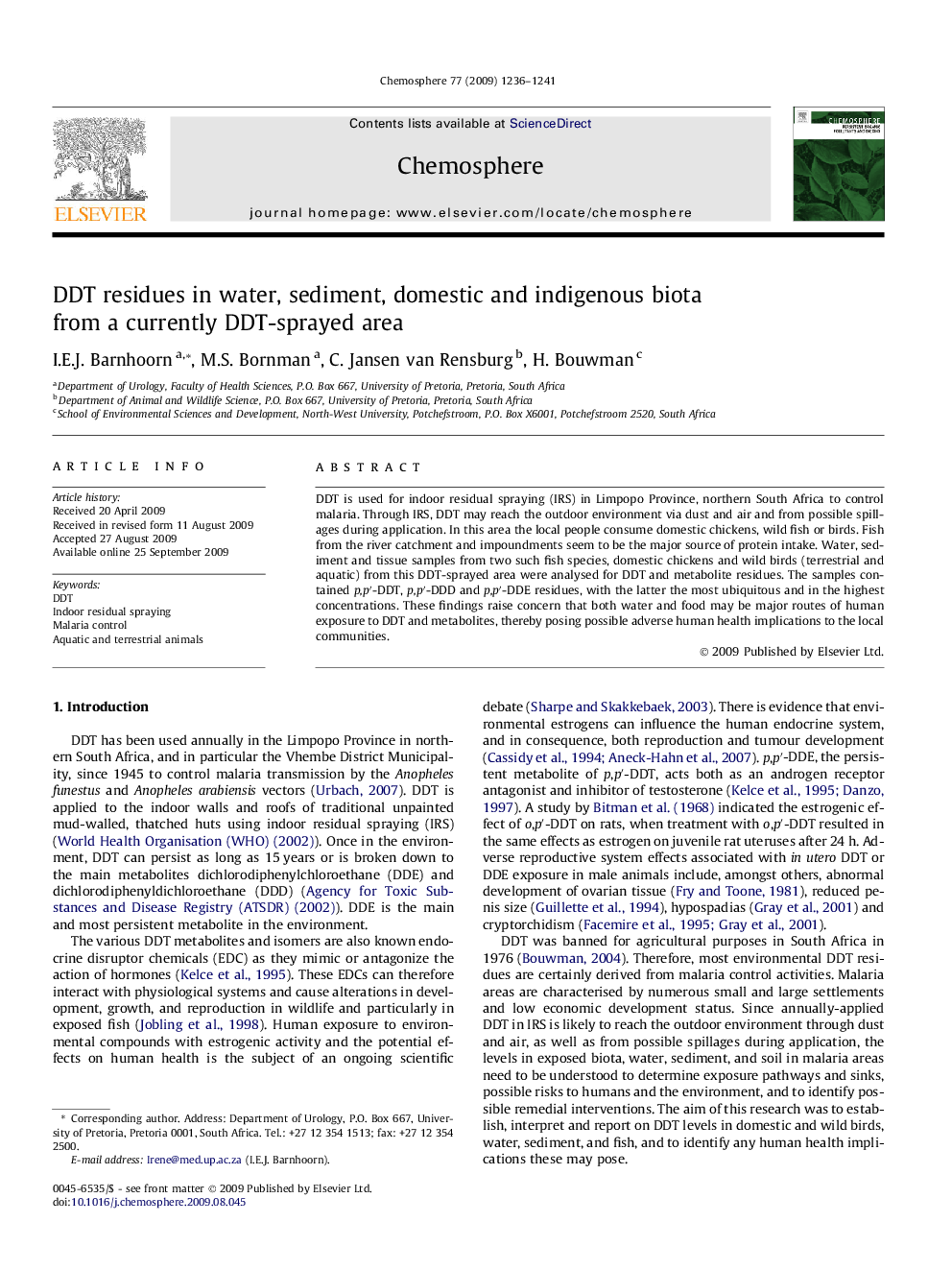| Article ID | Journal | Published Year | Pages | File Type |
|---|---|---|---|---|
| 4411989 | Chemosphere | 2009 | 6 Pages |
DDT is used for indoor residual spraying (IRS) in Limpopo Province, northern South Africa to control malaria. Through IRS, DDT may reach the outdoor environment via dust and air and from possible spillages during application. In this area the local people consume domestic chickens, wild fish or birds. Fish from the river catchment and impoundments seem to be the major source of protein intake. Water, sediment and tissue samples from two such fish species, domestic chickens and wild birds (terrestrial and aquatic) from this DDT-sprayed area were analysed for DDT and metabolite residues. The samples contained p,p′-DDT, p,p′-DDD and p,p′-DDE residues, with the latter the most ubiquitous and in the highest concentrations. These findings raise concern that both water and food may be major routes of human exposure to DDT and metabolites, thereby posing possible adverse human health implications to the local communities.
